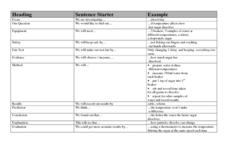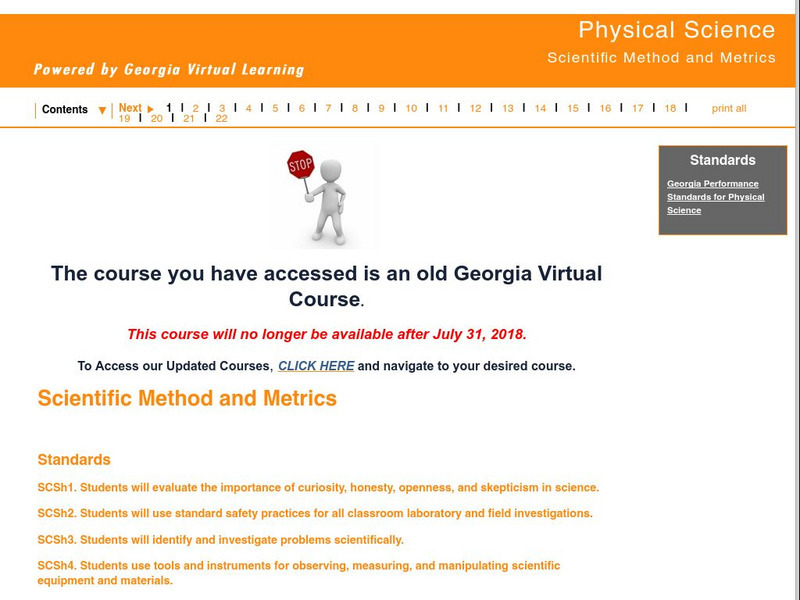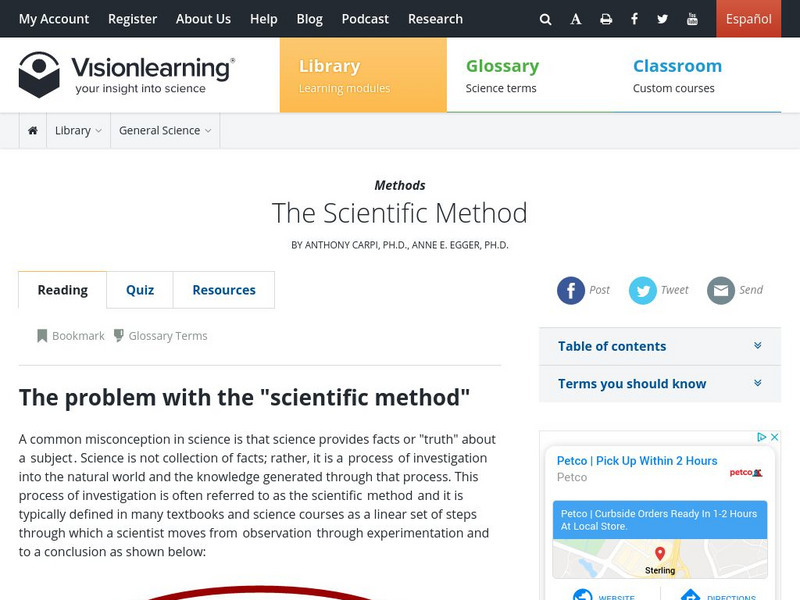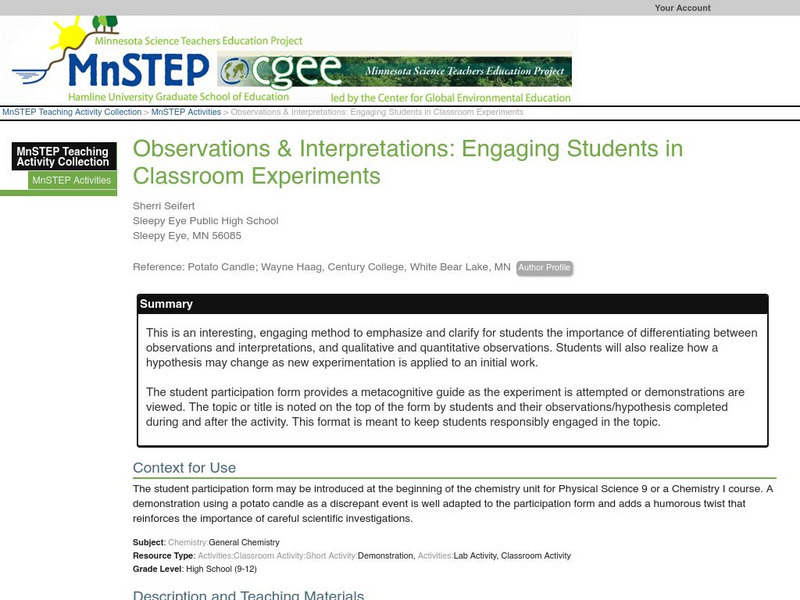Curated OER
Investigate Science Using Crayfish
Young scientists discover the importance of scientific investigation by observing live crayfish. They carefully observe the patterns of crayfish in different environments. Then they discuss their conclusions and define what all living...
Curated OER
Busted Bubbles
Using the scientific method, and bubble gum, learners conduct a motivating experiment. After conducting a series of tests involving bubble gum, they graph and analyze their results. This is the type of activity everyone loves.
Teaching Ideas
Investigation Prompts
Get your class started with experimentation and investigation by providing sentence starters. This chart is made up of three columns. The first column lists steps of the scientific process and the second provides sentence starters for...
Curated OER
Build a Catapult
Studens construct their own catapult. In this history of catapults lesson, students work in groups to make their own model of a catapult. Students use physics vocabulary terms explain how the catapult works. Students test the...
Curated OER
CLOUD IN A BOTTLE
Students make observations of what they see happening in the formation of a cloud in a modeled situation. They compile their observations in a list to better explain how the formation happened.
Curated OER
Summer Activities: Let's Try Bubble Blowing!
Students observe as the teacher blows bubbles from a large bubble pipe in order to take note of the colors and sizes of the bubbles. In this bubble blowing lesson, students experiment with a variety of bubble-blowing objects, predicting...
Curated OER
Nature: Planting Terrariums
Learners observe and experiment using a terrarium. For this scientific lesson plan, students build a nature terrarium. Learners then observe their terrarium over a period of time to discover what makes the plants grow. A science...
Curated OER
Science Ethics and Experimentation
In this science activity, students read the six page activity to examine the controversial issue of using animals for experimentation.
Curated OER
Inventing and Presenting Unit 3: Persuasive Speaking and Invention Promotion
Learners write a proposal for a speech. Students prepare appropriate visuals for use in the proposed speech. Learners produce one or more graphs that summarize the results from the experimentation. Students deliver an effective speech in...
Curated OER
The Five Senses - Observation, Experimentation, Prediction, and Categorization.
First graders engage in this creative and well-designed lesson. They rotate through five learning stations, each devoted to one of the senses. They practice observation, experimentation, prediction, and categorization.
Curated OER
An Apple a Day
Seventh graders explore how to make careful observations and gain valuable practice in drawing what they observe. They stimulate questions about the changes occurring in the apple. Students have an opportunity to ask questions that can...
Curated OER
Science Show
Students research topics. They teach a lesson based on their chosen topic to other students.
Georgia Department of Education
Ga Virtual Learning: Physical Science: Scientific Method and Metrics
Students have the opportunity to review the scientific method, become familiar with vocabulary terms associated with scientific investigation, and learn about real-world scientific examples where the method is used.
Vision Learning
Visionlearning: Practice of Science: Introduction to Research Methods
An explanation indicating that there is more than one method of scientific research.
Vision Learning
Visionlearning: Research Methods: Experimentation in Scientific Research
An explanation of scientific research using variables and controls.
Vision Learning
Visionlearning: General Science: The Scientific Method
Instructional module focusing on the scientific method as a process of investigation into the natural world rather than a linear collection of facts. Site also includes an interactive practice quiz and links relating to the topic.
PBS
Pbs Learning Media: Columns: Finding the Strongest Shape
In this video segment, members of the ZOOM cast experiment by bending and folding sheets of paper into various shapes to see which shape will support the weight of a heavy book. [3:33]
Other
America Dept. Of State: Outline of American Literature [Pdf]
This online book presents an overview of American literature chronologically. Eras and movements are explained and biographies of significant authors are provided. This is a good way to understand the background and influences of...
PBS
Pbs Learning Media: Pitch: Straw Kazoo
This video segment, adapted from ZOOM, explores the different sounds that a simple drinking straw can produce when you cut the straw and blow into it. [1:56]
PBS
Pbs Learning Media: Triangles: Designing a Straw Bridge
In this video segment adapted from ZOOM, the cast tries to design and build a bridge made out of drinking straws that will support the weight of 200 pennies. [4:02]
Indiana University
Indiana University: Science vs. Non Science
This mini-lesson at the Evolution and Nature of Science Institute site from Indiana University provides a criteria by which students can evaluate an idea or explanation for scientific credibility.
University of Virginia
U of Virginia: Bad Blood: The Tuskegee Syphilis Study
Participants in the Tuskegee Syphilis Study were never told that they had syphilis. Instead, the doctors and scientists said they had "bad blood." Find out what took place during this study, and the social and political consequences...
Science Education Resource Center at Carleton College
Serc: Observations & Interpretations: Engaging Students in Classroom Experiments
Use this method to emphasize and clarify for students the importance of differentiating between observations and interpretations, and qualitative and quantitative observations. Students will learn how a hypothesis may change as new...
PBS
Pbs: An Apology 65 Years Late
An article covering former President Clinton's apology to the survivors and family members of the Tuskegee Syphilis Study. Dated May 16, 2007.



















![America Dept. Of State: Outline of American Literature [Pdf] eBook America Dept. Of State: Outline of American Literature [Pdf] eBook](http://content.lessonplanet.com/resources/thumbnails/410155/large/bwluav9tywdpy2symdiwmduymc0yotc0ny0xzhf5cgiwlmpwzw.jpg?1589985629)



